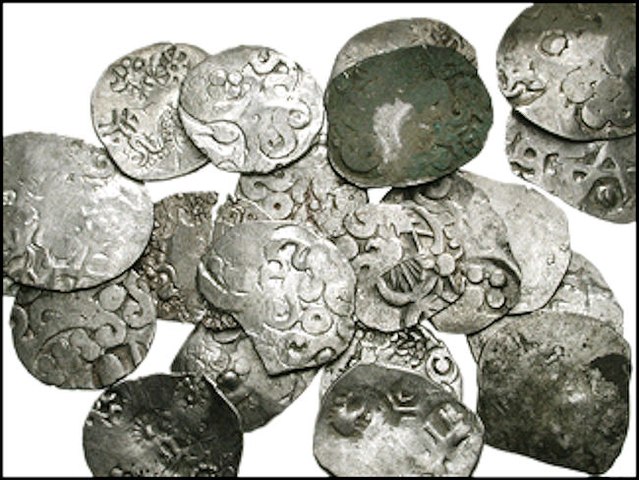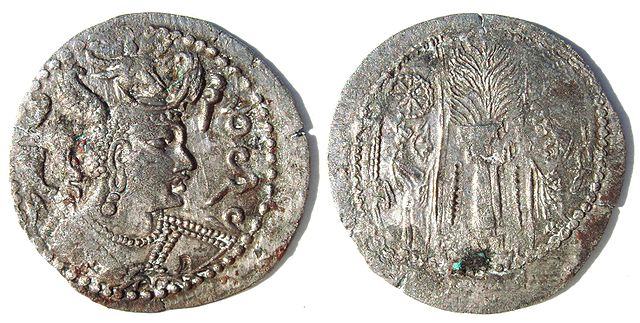Economic history of India
India was one of the richest countries in the world, for about two and a half millennia starting around the end of 1st millennium BC and ending around the beginning of British rule in India.
Tharisapalli plates granted to Saint Thomas Christians by South Indian Chera ruler Sthanu Ravi Varma testify that merchant guilds and trade corporations played a very significant role in the economy and social life during the Kulasekhara period of Kerala, India.
Silver coins of Kosala Mahajanapada, c. 525-465 BCE
Silver coin of Avanti Mahajanapada, c. 400-312 BCE
Silver coin of the Maurya Empire, 3rd century BC
The middle kingdoms of India were the political entities in the Indian subcontinent from 230 BCE to 1206 CE. The period begins after the decline of the Maurya Empire and the corresponding rise of the Satavahana dynasty, starting with Simuka, from 230 BCE. The "middle" period lasted for almost 1436 years and ended in 1206 CE, with the rise of the Delhi Sultanate, founded in 1206, and the end of the Later Cholas.
Silver coin of the founder of the Indo-Greek Kingdom, Demetrius (r. c. 205–171 BC).
Billon drachma of the Huna King Napki Malka (Afghanistan or Gandhara, c. 475–576).
The rock-cut Buddhist viharas and chaityas of Ajanta Caves, built under the patronage of the Vakataka rulers.
Silver coin of the Gupta King Kumara Gupta I (414–455).








